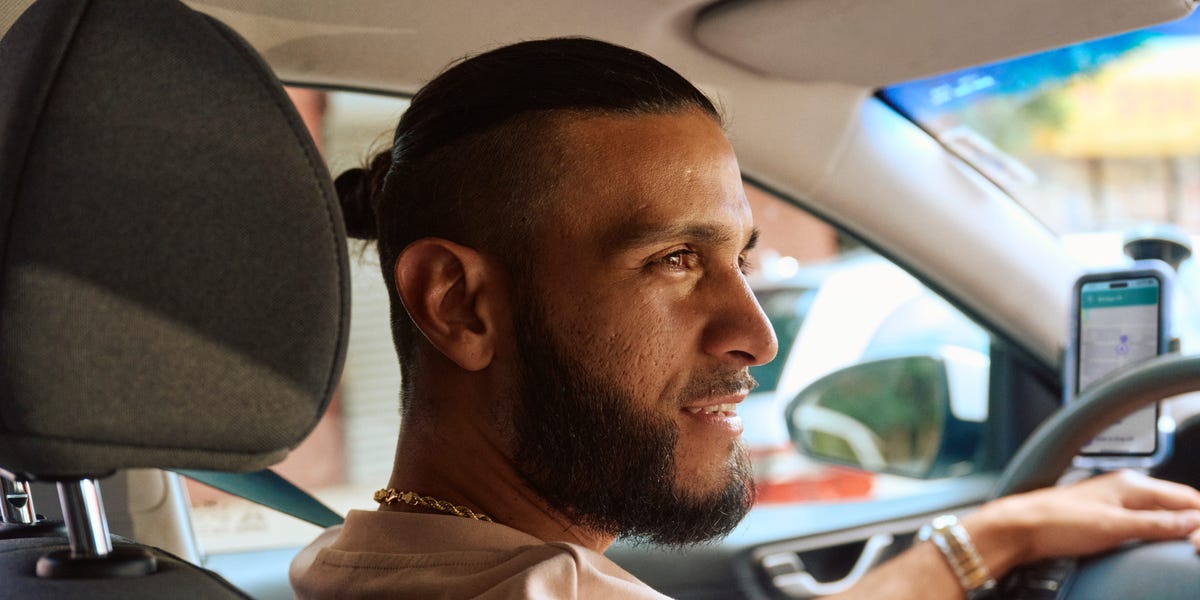Every time Alex publishes a story, you’ll get an alert straight to your inbox!
Enter your email
By clicking “Sign up”, you agree to receive emails from Business Insider. In addition, you accept Insider’s Terms of Service and Privacy Policy.
Today’s ride-hailing drivers might be tomorrow’s robotaxi owners, a Lyft executive says.
While driverless cars are hitting the streets of more US cities, it’s not yet clear who will own and manage all those vehicles. Today, drivers for apps like Lyft typically handle that themselves.
As self-driving cars become cheaper and more common, though, there could be a new opportunity for drivers in the world of robotaxis, said Jeremy Bird, Lyft’s executive vice president of driver experience.
“The hybrid world of that future might be that the driver is the owner of the vehicle that they are able to put on the platform,” Bird told Business Insider.
Lyft has struck deals with some companies to bring self-driving vehicles to its app.
In its latest partnership, announced earlier this month, Lyft is working with startup Tensor to make self-driving vehicles owned by average consumers available for rides on the Lyft app. Tensor said that the approach would allow its vehicles to “generate income around the clock” for owners.
Some drivers worry that self-driving cars will hurt their ride-hailing earnings — and, eventually, replace them.
Dara Khosrowshahi, CEO of rival ride-hailing app Uber, has said that drivers running out of work “is going to be a real issue” in 10 to 15 years. Uber is also piloting robotaxis, including through a partnership with Waymo.
Bird declined to put a timeline on when robotaxis could start displacing human drivers. He said there will likely always be demand for human drivers who can perform special tasks, such as helping a passenger load several heavy suitcases into and out of the car on a trip to the airport.
But Bird said that Lyft is surveying and holding listening sessions with drivers as it expands robotaxis and changes its app.
On Monday, Lyft unveiled updates to its driver app that include paying drivers for the time they spend waiting for a passenger at pick-up and letting them opt into or out of receiving certain types of rides, such as Lyft Black.
“Every year we’re looking at what we can do to improve the platform for drivers and for riders,” he said.
Robotaxis could create other jobs as well, such as at the depots that maintain the vehicles, Bird said. The cars would need to be charged and serviced around the clock.
“There’ll be more opportunities, because those sites will have more cars with more hours and more work,” Bird said.
Lyft already employs former ride-hailing drivers in a similar capacity at locations for its Flexdrive program, which allows drivers to rent cars from Lyft. Managing that fleet of human-driven cars requires several kinds of workers, from customer-service representatives to mechanics, he said.
Walter Strobel, who drives for Lyft in the Bay Area and previously ran his own delivery business, said that he would consider taking out a loan to buy vehicles that he could make available to Lyft for rides.
Strobel said that the thousands of robotaxis that Lyft would need in the long run could create opportunities for larger financial players. Even so, he said, he would like to see opportunities for smaller owners.
“If you have the credit, you can go out and buy five vehicles,” he said.
Do you have a story to share about Lyft or other gig work? Contact this reporter at abitter@businessinsider.com or 808-854-4501.
Jump to












